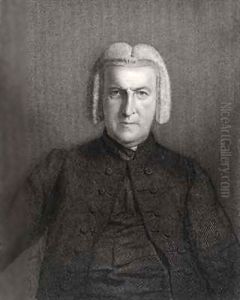William Behnes Paintings
William Behnes was an English sculptor of the 19th century, known for his portrait busts and statues. Born in London in 1795, he was the son of a Hanoverian pianoforte maker, whose profession exposed young Behnes to a variety of artistic circles from an early age. His early aptitude for art led to his apprenticeship with the notable sculptor John Francis.
Behnes showed exceptional talent and was admitted to the Royal Academy Schools in 1813, where he further honed his skills. He initially made his mark with small-scale works and portrait busts. His talent quickly caught the attention of influential patrons, which helped him establish a successful career. He was particularly noted for his portrait busts, which captured the likeness and character of his subjects with notable precision and expression.
During the 1820s and 1830s, Behnes became one of the most sought-after portrait sculptors in England. He was commissioned to create busts and statues of prominent figures of the time, including royalty, statesmen, and military heroes. His works were not limited to private commissions, as he also created public monuments, including the statue of Sir William Follett in Westminster Abbey and the monument to the Duke of Wellington in St Paul's Cathedral.
Unfortunately, despite his early success, Behnes's later life was marred by financial difficulties. His extravagant lifestyle, coupled with a decline in commissions, led to a significant fall in his fortunes. He was declared bankrupt in 1861, and his reputation suffered as new artistic movements and tastes emerged. William Behnes passed away in relative obscurity in 1864. Today, he is remembered for his contributions to British sculpture and his works are held in various collections, serving as a testament to his once prominent position in the British art world.

